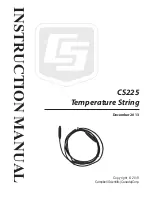
INDEX
INSTRUMENT PANEL FEATURES
Tune or tune at setpoint program
SECOND AND THIRD SETPOINTS (SP2 and SP3)
2
Right Red LED:
Program Holdback
indicator
Orange Display:
Setpoint value or
program selection
Green LED:
Setpoint 1 output indicator
Upper Red LED:
Setpoint 2 output
indicator
Lower Red LED:
Setpoint 3 output
indicator
Green Display:
Process variable or
Function/Option
ADJUSTMENTS
To enter or exit
program mode
: Press
▲ ▼
together for 3 seconds
To scroll through
functions
: Press
▲
or
▼
To change
levels
or
options
: Press
✱ ▲
together or
✱ ▼
together
To view setpoint units:
Press
✱
To increase setpoint:
Press
✱ ▲
together
To decrease setpoint:
Press
✱ ▼
together
To reset latched alarm or tune fail:
Press
▲ ▼
together briefly
To run or Hold a program:
Press
✱ ▼
together for 3 seconds
Notes:
If in difficulty by becoming “lost” in program mode, press
▲
and
▼
together for 3
seconds to return to display mode, check the INSTRUMENT ADJUSTMENTS above and
try again.
When in program mode, after 60 seconds of key inactivity the display will revert to
either
inPt : nonE
or, if the initial configuration has been completed, the measured
value. Any settings already completed will be retained. During Program Configuration it
is recommended that this feature is inhibited. Select
ProG StAY
in Level 4.
This page can be photocopied and
used as a visual aid and bookmark when
working in other parts of the manual.
!
English



































